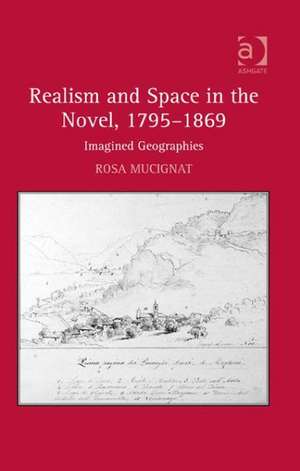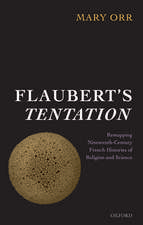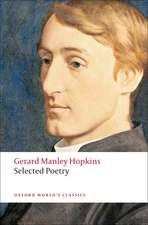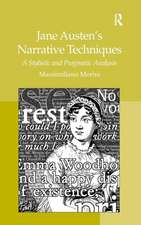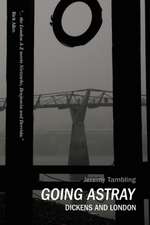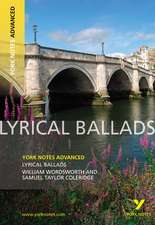Realism and Space in the Novel, 1795-1869: Imagined Geographies
Autor Rosa Mucignaten Limba Engleză Hardback – 28 ian 2013
| Toate formatele și edițiile | Preț | Express |
|---|---|---|
| Paperback (1) | 257.90 lei 43-57 zile | |
| Taylor & Francis – 14 oct 2024 | 257.90 lei 43-57 zile | |
| Hardback (1) | 1054.58 lei 43-57 zile | |
| Taylor & Francis – 28 ian 2013 | 1054.58 lei 43-57 zile |
Preț: 1054.58 lei
Preț vechi: 1286.07 lei
-18% Nou
Puncte Express: 1582
Preț estimativ în valută:
201.86€ • 219.34$ • 169.67£
201.86€ • 219.34$ • 169.67£
Carte tipărită la comandă
Livrare economică 21 aprilie-05 mai
Preluare comenzi: 021 569.72.76
Specificații
ISBN-13: 9781409450559
ISBN-10: 1409450554
Pagini: 192
Dimensiuni: 156 x 234 x 13 mm
Greutate: 0.45 kg
Ediția:1
Editura: Taylor & Francis
Colecția Routledge
Locul publicării:Oxford, United Kingdom
ISBN-10: 1409450554
Pagini: 192
Dimensiuni: 156 x 234 x 13 mm
Greutate: 0.45 kg
Ediția:1
Editura: Taylor & Francis
Colecția Routledge
Locul publicării:Oxford, United Kingdom
Public țintă
AcademicNotă biografică
Dr Rosa Mucignat is Lecturer in Comparative Literature at King's College London, UK.
Cuprins
Introduction; Chapter 1 Making Worlds; Chapter 2 Our Daily Adventure; Chapter 3 Space and the Symbol; Chapter 4 Space and the Map; Chapter 5 Space and the Field; conclusion Conclusion;
Recenzii
'Mucignat’s book advances a compelling argument about the manner in which narrativized space was transformed in late eighteenth and early nineteenth century novels. Moreover, Mucignat’s division of narrativized space into visibility, depth and movement provides a useful tool for engaging with the complexity of space in literature in general.' BARS Bulletin ’Mucignat’s readings are informative and well researched ... scholars of nineteenth-century fiction, especially those working on texts in the corpus, will find much of interest here.’ Modern Language Review ’...Mucignat’s work is valuable not only for its close inspection of space in literature from eighteenth to nineteenth century, but also insofar as it implicitly discusses how these works of fiction act as a prelude to Modernism.’ Journal of Comparative Literature 'This book is well organized and clearly written. The argument is illuminating and suggestive about the novels it covers and the realist novel more generally.' European Romantic Review
Mucignat, Realism and Space in the Novel, 1795-1869
Rosa Mucignat, Realism and Space in the Novel, 1795-1869: Imagined Geographies (Oxford:
Routledge 2013) 192 pp. £95.00 Hb. ISBN: 9781409450559
The title of Rosa Mucignat's Realism and Space in the Novel 1795-1869: Imagined Geographies only palely
suggests the nature of this careful, well documented, and very pertinent literary study. Mucignat's book
reflects the hybrid nature of the novel in which multiple factors and vectors come to influence its delicate
economy. In the play of forces establishing the solidity of characters in the realist novel, space emerges
as a newly significant element, rather than a mere backdrop. Striving for an effet de réel – as it will be
duly interpreted and called by Barthes – and finally attaining that objective, a spatial dimension is
constituted which is consistent and meaningful and alters the reader's perception of the construction of
the characters and, obviously, the narrative logic. Mucignat’s work seeks to analyze the strategies that the
writers use in order to create a textual cartography, symbolic, conscious of and representative of
European realism, from its beginnings at the end of the eighteenth century, up to its most pure and
critical form in the work of Gustave Flaubert.
Based on the conviction – introduced in the first page – that the insertion of a geographic space,
imagined or real, 'gives texture and feel to a story' (1), Mucignat develops a convincing analysis of her
chosen texts over the five chapters. The first chapter, 'Making Worlds', is concerned above all with the
understanding of the transformative power of the physical agent (also psychological and phantasmatic)
called space, utilizing the different perspectives previously analyzed by critics like Barthes, Auerbach, and,
in an idiosyncratic way, Bakhtin: visibility, depth, and movement. Following the concept of the chronotope
developed by Bakhtin, as well as the Barthesian observation that detailed description changes the
narrative code of understanding, Mucignat shows that space contains in itself a more profound and
relevant meaning than merely a symbolic, decorative, or representative function: made visible by vivid
and accurate descriptions, space comes to play 'a role in the general economy of the diegetic-mimetic
unity of the text' (5). Consequently, it constitutes an element that is able to materialize the story that it
sets out to tell. In the same way, the depth reached by realist description allows the reading of novelistic
space along a vertical axis, capable of traversing the lives of the characters, which previously were
impenetrable. With respect to the construction of this new verticalized dimension of the fictional
universe, Mucignat evokes the influence of other scientific knowledges that interfere with it,
reverberations of the natural world in the very discursive context of the novel: from geological and
archeological metaphors to the manifestations of the nascent biological sciences, distinct spheres of
thinking that converge in the production of a modern episteme that echo freely in the countryside, as
well as in the urban centers portrayed in realist literature. This spatial dichotomy (rural versus urban) is
used by Mucignat to develop a fruitful analysis of movement, that kind of movement which can be
employed in order to dictate the tempo of the narrative/narration (22), but which can also refer to
immobility and displacement, an opposition serving as material for the creation and destiny of diverse
characters, such as Frédéric Moreau, Pip, and Julien Sorel.
Mucignat, Realism and Space in the Novel, 1795-1869
Rosa Mucignat, Realism and Space in the Novel, 1795-1869: Imagined Geographies (Oxford:
Routledge 2013) 192 pp. £95.00 Hb. ISBN: 9781409450559
The title of Rosa Mucignat's Realism and Space in the Novel 1795-1869: Imagined Geographies only palely
suggests the nature of this careful, well documented, and very pertinent literary study. Mucignat's book
reflects the hybrid nature of the novel in which multiple factors and vectors come to influence its delicate
economy. In the play of forces establishing the solidity of characters in the realist novel, space emerges
as a newly significant element, rather than a mere backdrop. Striving for an effet de réel – as it will be
duly interpreted and called by Barthes – and finally attaining that objective, a spatial dimension is
constituted which is consistent and meaningful and alters the reader's perception of the construction of
the characters and, obviously, the narrative logic. Mucignat’s work seeks to analyze the strategies that the
writers use in order to create a textual cartography, symbolic, conscious of and representative of
European realism, from its beginnings at the end of the eighteenth century, up to its most pure and
critical form in the work of Gustave Flaubert.
Based on the conviction – introduced in the first page – that the insertion of a geographic space,
imagined or real, 'gives texture and feel to a story' (1), Mucignat develops a convincing analysis of her
chosen texts over the five chapters. The first chapter, 'Making Worlds', is concerned above all with the
understanding of the transformative power of the physical agent (also psychological and phantasmatic)
called space, utilizing the different perspectives previously analyzed by critics like Barthes, Auerbach, and,
in an idiosyncratic way, Bakhtin: visibility, depth, and movement. Following the concept of the chronotope
developed by Bakhtin, as well as the Barthesian observation that detailed description changes the
narrative code of understanding, Mucignat shows that space contains in itself a more profound and
relevant meaning than merely a symbolic, decorative, or representative function: made visible by vivid
and accurate descriptions, space comes to play 'a role in the general economy of the diegetic-mimetic
unity of the text' (5). Consequently, it constitutes an element that is able to materialize the story that it
sets out to tell. In the same way, the depth reached by realist description allows the reading of novelistic
space along a vertical axis, capable of traversing the lives of the characters, which previously were
impenetrable. With respect to the construction of this new verticalized dimension of the fictional
universe, Mucignat evokes the influence of other scientific knowledges that interfere with it,
reverberations of the natural world in the very discursive context of the novel: from geological and
archeological metaphors to the manifestations of the nascent biological sciences, distinct spheres of
thinking that converge in the production of a modern episteme that echo freely in the countryside, as
well as in the urban centers portrayed in realist literature. This spatial dichotomy (rural versus urban) is
used by Mucignat to develop a fruitful analysis of movement, that kind of movement which can be
employed in order to dictate the tempo of the narrative/narration (22), but which can also refer to
immobility and displacement, an opposition serving as material for the creation and destiny of diverse
characters, such as Frédéric Moreau, Pip, and Julien Sorel.
Descriere
Posing new questions about realism and the creative power of narratives, Mucignat offers fresh readings of novels by Goethe, Jane Austen, Alessandro Manzoni, Stendahl, Charles Dickens and Gustave Flaubert, to examine the links between the nineteenth-century novel's interest in creating life-like worlds and contemporary developments in science, art and society. Her book evokes the way novels produce imagined geographies that intensify and even transform the reader's experience of real-life places.
